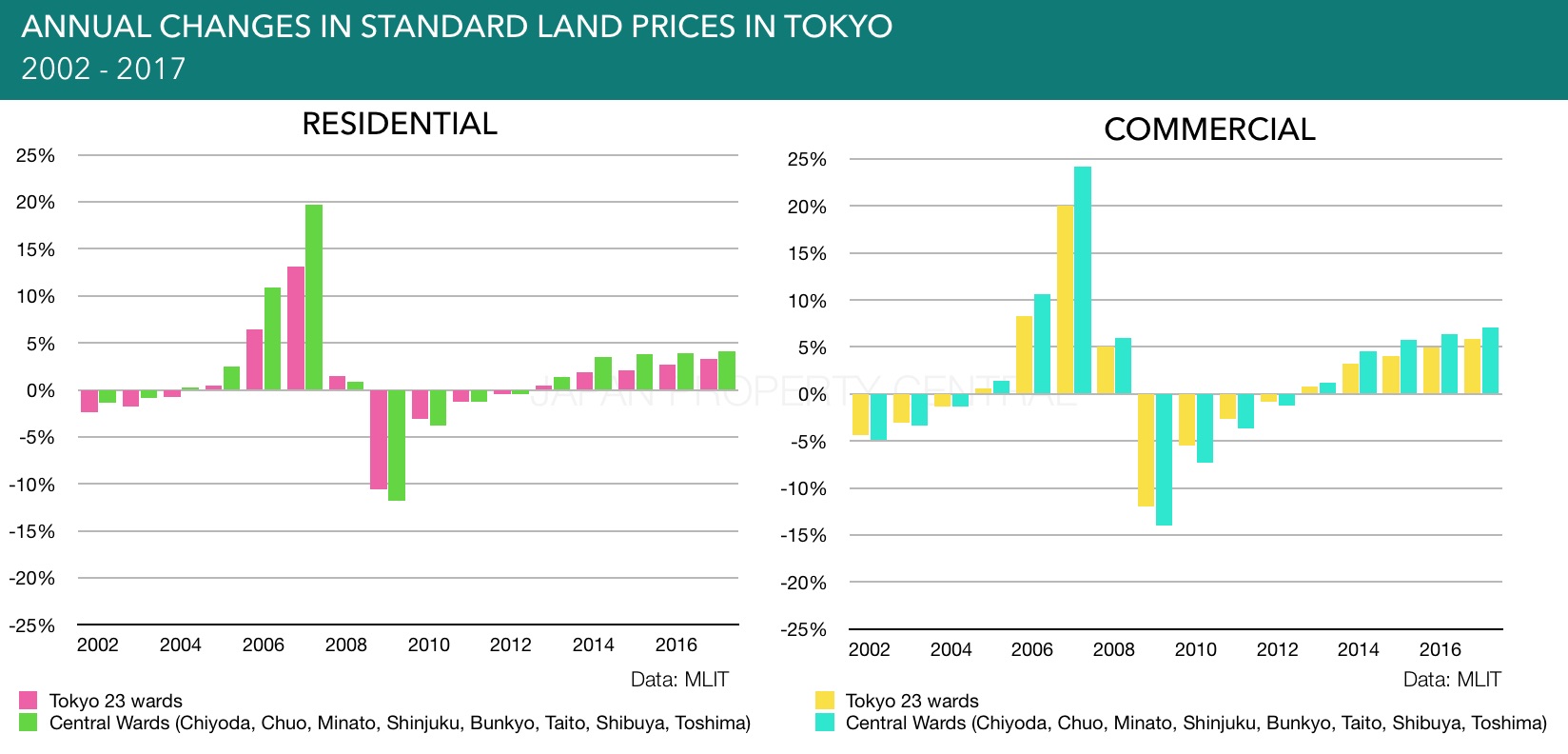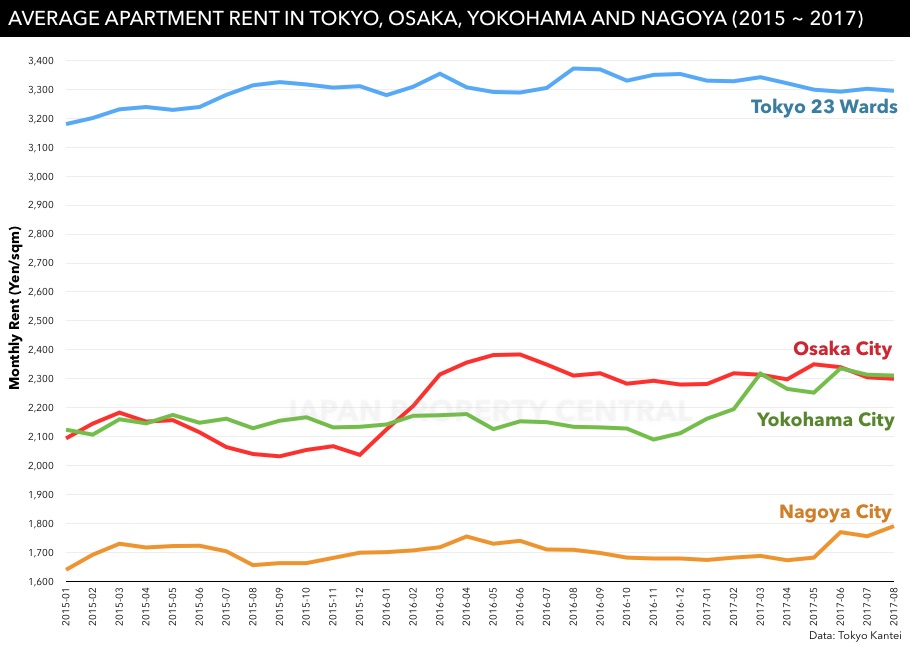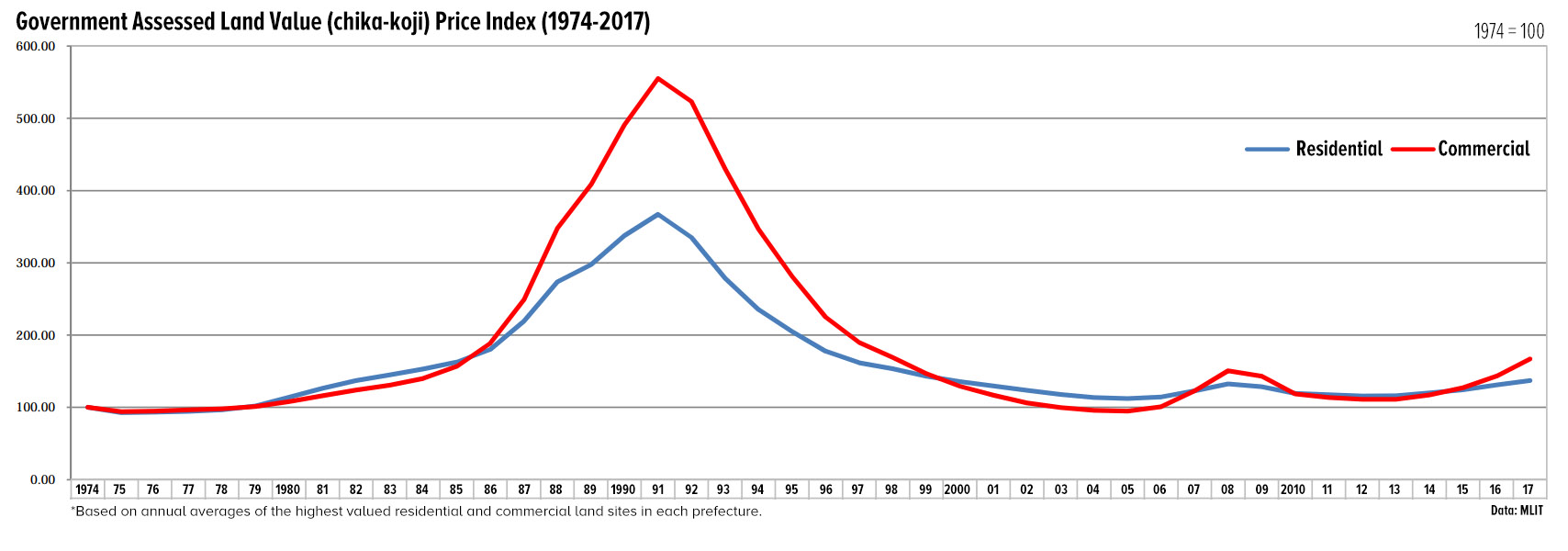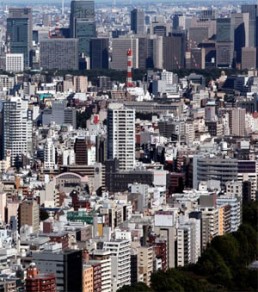Standard land prices in Tokyo increase for 5th year in a row, while nationwide commercial prices increase for first time in 10 years

The Ministry of Land, Infrastructure, Transport and Tourism (MLIT), announced the Standard Land Prices on September 19th. In the Tokyo metropolitan area, land prices across all uses increased by 3.0% from last year, recording the fifth consecutive increase in land prices. Commercial land prices in Tokyo’s 23 wards increased by an average of 5.9%, after recording a 4.9% increase in 2015. Shibuya Ward was in top place with 8.6% growth (6.6% in 2016).
The survey site under the Ginza Owaricho Tower in Ginza 6 Chome saw a 21.8% increase in land prices over the past 12 months.
Nationwide, standard land prices were down 0.6% for residential land, but up 0.5% for commercial land. This is the first time in 10 years to see an increase in commercial land prices.
Kyoto’s tourism boom drives commercial land price growthRead more
Average apartment rent down in greater Tokyo

According to Tokyo Kantei, the average monthly rent of a condominium-type apartment across greater Tokyo in August was 2,628 Yen/sqm, down 0.1% from the previous month and down 1.2% from last year. The average apartment size was 59.74 sqm and the average building age was 21.1 years.
New apartment prices in greater Tokyo increase for 5th month in a row

According to the Real Estate Economic Institute, there were 2,101 brand new apartments offered for sale across greater Tokyo in August, down 38.7% from the previous month but up 6.9% from last year. The average sale price was 57,940,000 Yen, down 11.7% from the previous month but up 2.3% from last year. The average price per square meter was 871,000 Yen, up 9.1% from last year and the fifth month in a row to record a year-on-year increase.
The contract ratio in greater Tokyo was 68.2%, up 1.6 points from last year. In the Tokyo metropolitan area it was 72.4%, above the 70% line said to indicate healthy market conditions.
The following buildings saw same-day sellouts in August:
Tokyo apartment sale prices increase for 59th consecutive month

According to REINS, 2,265 second-hand apartments were sold across greater Tokyo in August, down 31.4% from July and down 5.0% from last year. August is one of the hottest months in the year and often a time when Japanese take a vacation, so sales are typically slower than in July or September.
The average sale price was 32,380,000 Yen, up 2.5% from the previous month and up 7.6% from last year. The average price per square meter was 505,000 Yen, up 2.1% from the previous month and up 5.9% from last year. This is the 56th month in a row to record a year-on-year increase in sale prices. The average building age was 20.69 years.
In the Tokyo metropolitan area 1,141 second-hand apartments were sold, down 33.7% from the previous month and down 4.8% from last year. The average sale price was 40,350,000 Yen, up 4.4% from the previous month and up 7.4% from last year. The average price per square meter was 684,200 Yen, up 4.3% from the previous month and up 7.4% from last year. This is the 59th month in a row to record a year-on-year increase in sale prices. The average building age was 19.39 years.
Price growth in Tokyo more subdued than the 2007 mini-bubble

Earlier this year, rosenka tax values at a section of ultra-prime commercial land in Tokyo’s Ginza district increased by 26% from the previous year to a record high of 40,320,000 Yen per square meter, exceeding the previous high of 36,500,000 Yen/sqm in 1992 and causing some to warn of an impending bubble and overheating of the property market in the nation’s capital.
There is valid cause for concern in some sectors of the investment-property market due to potential over-construction and over-lending to landowners to build small blocks of 'apaato' type rental flats in suburban areas with low rental demand.
But are current conditions mimicking previous bubbles?
This time around Japan is getting more foreign tourists than ever before, boosting revenues for both hotels and retails shops, making the increase in commercial real estate values much more pronounced than the residential market which relies more on real domestic demand.
Supply of new apartments shrinking as developers struggle to secure land
In the midst of a recovering property market, Japan’s top real estate developers are struggling to find suitable plots for residential projects, causing supply to shrink and sales volumes to fall.
The total value of real estate available for sale by the country’s top five developers as at the end of June 2016 was 3.107 trillion Yen (approx. 28 billion USD), down 0.4% from March and the first time in 9 quarters to record a decline. Increasing land prices and intense competition has meant that even though demand for real estate remains high there are fewer projects on offer.Read more
Tokyo Apartment Sales in August 2017

The following is a selection of apartments that were sold in central Tokyo during the month of August 2017:Read more

